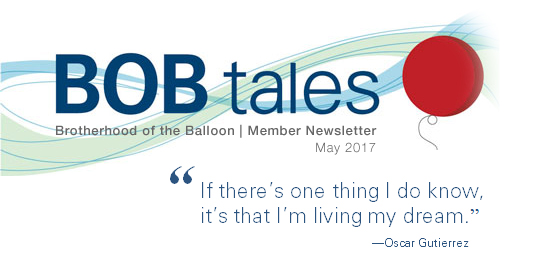
Dear Members (a note from Deb Hickey):
Every monthly BOB Tales newsletter begins at about 60 pages. We gather information from a variety of sources every day—Google Alerts, men’s health newsletters and magazines, newspapers, and sometimes television. A month before our issue date, we sort through the articles we have and remove articles and information we feel may not be valuable to our readers. Then we abstract, condense, and refine each story.
We strive to give our readers news and information they can relate to and value without overwhelming them with clutter. This month is no different; however this is a special issue. In addition to our standard articles and commentary, we include breaking news on the PCORI study we mentioned last month, comparing proton to IMRT. And, we discuss the programs, presentations, and remarkable research and projections for proton therapy from the 2017 National Proton Conference (NPC) held in Orlando, Florida. It’s one of our most comprehensive newsletters to date and we are excited
to share it with you.
I had the privilege of attending my first NPC last month. Lucky for me, it was held in beautiful Orlando at the Renaissance Resort at Seaworld. Attended by physicians, nurses, therapists, physicists, proton therapy directors and managers, equipment manufacturers and vendors, and even lawyers, the conference focused on the evolution of proton therapy, planning issues for the development of proton therapy centers, insurance coverage and appeals for proton patients, inpatient-centered programs, and the future of proton therapy. Attendance was at record levels and proton centers from around the nation and the world were represented.
Having been in the marketing business for over 12 years before joining the proton world, I have never attended a conference where participants and attendees were more excited and engaged.
I was honored to meet Dr. Nancy Mendenhall of UF Health Proton Therapy Institute, one of the most renowned and respected names in the proton world. I also met Dr. Les Yonemoto of Procure, OK, an outstanding radiation oncologist whom I’ve gotten to “know” over email within the past couple of years as he’s been assisting us with insurance appeals and technical support, and has been a strong voice within the NAPT community. I met Dr. Andrew Lee of the Texas Center for Proton Therapy briefly in the exhibition hall, someone I’ve admired for years as I’ve worked alongside my father and this “ministry.” Dr. Lee, an oncology leader, innovator, and researcher wrote many articles I’d read when I was first introduced to proton therapy. I was also honored to get to know Joy Godby of MD Anderson in Texas, someone my father has been telling me about for years—an exuberant and brilliant proton therapy advocate. Joy also played a pivotal role in helping my husband connect with two of the most prominent pancreatic cancer specialists in the world when he was diagnosed with that deadly disease three years ago.
I was on cloud nine as I shook hands with many other influential figures in the proton world, including a man I’ve had the privilege of meeting several times in the past, Dr. Jerry Slater of Loma Linda University Cancer Center. Dr. Slater was there to accept a Lifetime Achievement award on behalf of his father, Dr. James Slater. And speaking of LLUCC, I had the honor of meeting Dr. Joseph Kang, a prominent radiation oncologist and a lead proton researcher, and spent some quality time with Yoly Magana, Director of Clinical Operations, and Judy Chatigny, Executive Director at LLUCC, two wonderful, hard working and dedicated professionals.
Finally, I enjoyed spending time with BOB member Ron Nelson who delivered a keynote presentation on the proton patient’s perspective.
What a week!
In this issue we provide some highlights from the conference and the special awards ceremony honoring Dr. James Slater and Dr. James Cox, professor in the department of radiation oncology at MD Anderson. We also discuss the presentations and conversations focusing on dealing with insurance denials and strategies for engaging health providers on proton therapy coverage and much more.
We also discuss how doctors and researchers are using genomic biomarkers to guide treatment for prostate cancer, the critical importance of getting a second opinion after a cancer diagnosis, and new study findings about the health benefits of broccoli.
We hope you enjoy the May issue. As always, we welcome and encourage feedback. Just send an email to [email protected].
Deb Hickey
To print the BOB Tales newsletter or view the newsletter with a larger font size, click here for the PDF file.
In This Issue:
- Comparing Proton to IMRT in Treating Prostate Cancer—Study
- Using Genomics to Guide Treatment for Prostate Cancer
- The C Word: Adopting an Anticancer Lifestyle
- Recap: National Proton Conference 2017
- The Importance of a Second Opinion—You’re Not Going to Believe This
.jpg)
Comparing Proton to IMRT in Treating Prostate Cancer—Study
Last month we reported that a project has been initiated to request funding to conduct a comprehensive prospective study comparing proton therapy to IMRT for treating prostate cancer. A study like this has never been done and it could resolve disagreements that are restricting patients’ access to proton therapy, particularly with regard to private medical insurers’ coverage and reimbursement policies.
The project was kicked off with a workshop in Jacksonville, Florida in February with more than 50 representatives of U.S. proton centers in attendance. Bob Marckini was one of six patient stakeholders asked to participate in the project, which is headed up by Dr. Nancy Mendenhall, Medical Director at UFHPTI.
We reported last month that a comprehensive Letter of Intent (LOI) was being crafted requesting authorization to move to the final step of preparing a detailed, formal proposal requesting funding from the Patient Centered Outcomes Research Institute (PCORI).
We are happy to report that the LOI has been accepted by PCORI, and the team has been invited to submit a full proposal for “A Prospective Comparative Study of Outcomes with Proton and Photon Radiation in Black and White Men.” As Dr. Mendenhall told the project team, “The stars have been aligned for us. We have a great team, a guiding mission and wonderful patients as partners and champions. Now the work really begins!”
The full proposal is due in mid-May. Sub-groups of the project team will meet over the next several weeks. We will keep you posted on our progress.
In our opinion, this is one of the most important initiatives underway in the proton world. Stay tuned.
Using Genomics to Guide Treatment for Prostate Cancer
This article was contributed by BOB member Dr. Pat Greany, retired USDA research entomologist and courtesy professor at the University of Florida.
In the March issue of Prostatepedia, Dr. Charles “Snuffy” Myers—world-renowned prostate cancer treatment expert—discusses Using Genomics to Guide Treatment for prostate cancer. He interviewed several prominent physicians and researchers who are on the frontline of the development of new methods that use genetic biomarkers as indicators of a cancer’s aggressiveness and potentially the best therapies for individual prostate cancers. This is in keeping with the new approach of “personalized medicine” which is proving so valuable!
The full version of all seven interviews is available only by subscription, but the interview with Dr. Alicia Morgans on Genomics in the Clinic is provided in full text. Dr. Morgans helps us understand the meaning of “genomics” in the following statement:
Genetics looks at different genes that can be passed on and inherited through different generations to give you certain traits or different features, like eye or hair color. Genomics for oncology is the study of the genes that alter a cancer’s behavior or growth. It involves our understanding of what is driving a cancer’s growth in a particular person.
She addresses the potential use of genomics in screening for prostate cancer and indicates that at this time, genomics are applied only after a biopsy has been taken and the tissue subjected to analysis (She does not mention the use of the new, FDA and Medicare-approved Opko 4k Score, which also uses genetic biomarkers (Kallikreins) along with other criteria to assess whether a man has prostate cancer and if so, how aggressive it is likely to be. As compared with the genomic tests she mentions, no biopsy is required for this test and it requires only a blood sample, so it’s much less invasive.). She answers multiple questions that are commonly asked, such as:
- How are we using genomics to select initial treatments?
- How do we use genomics to predict who will or won’t respond to certain drugs?
- Do you think genomics will change how we design clinical trials?
- Are (genomic) tests expensive?
The other interviews also are very informative and it is well worth purchasing this issue of Prostatepedia.
Development of reliable genetically-based biomarkers is one of the prime areas of focus for the Dept. of Defense Prostate Cancer Research Program (funded at more than $80 million per year) because it is recognized that this approach has great potential for prostate cancer diagnosis and treatment.
Genomic analysis is also being used to great advantage for breast, ovarian, and colorectal cancer, as discussed in a recent video featuring Katie Couric, who interviews four prominent cancer researchers. Interestingly, mutation of genes in the BRCA family (tumor suppressor genes) is implicated in both breast cancer and in prostate cancer. According to Dr. Bill Nelson of Johns Hopkins University, about 5 percent of men with prostate cancer have a mutation of a BRCA gene, and about 15 percent of men with aggressive disease possess this mutation (scroll to the 43 minute, 26 second point of the video).
 The use of genomic analyses is in keeping with the increasingly important trend in medicine to use minimally-invasive methods for diagnosis and treatment and is sure to be of great value in the future. Many biotech companies have recognized this as a major focus for the future and are investing heavily in this field.
The use of genomic analyses is in keeping with the increasingly important trend in medicine to use minimally-invasive methods for diagnosis and treatment and is sure to be of great value in the future. Many biotech companies have recognized this as a major focus for the future and are investing heavily in this field.
The C Word: Adopting an Anticancer Lifestyle
The movie “The C-Word,” based on the book, Anticancer, by Dr. David Servan-Schreiber (reviewed in four installments in previous issues of this newsletter) is available for purchase as a DVD or download. The message of the film is to adopt an anticancer lifestyle, based on the six pillars of health outlined by Dr. Servan-Schreiber, including diet, physical activity, stress management, sleep, love and support, and environmental toxins.

Recap: National Proton Conference 2017
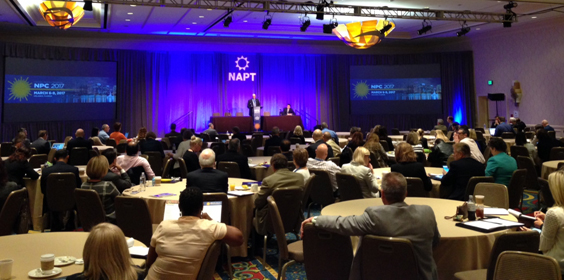
The annual National Proton Conference (NPC) is sponsored and organized by the National Association for Proton Therapy (NAPT). This year the conference was held at the Renaissance Hotel in Orlando, Florida, March 6 through 9.
The event was attended by proton center clinical and administrative leaders representing almost all proton centers in the U.S. and some overseas. Additional attendees included representatives of hospitals and medical centers who are either building proton centers or considering building proton centers. Also in attendance were vendors who design and manufacture equipment and systems that support proton therapy and related technologies.
The planning committee did an excellent job of choosing timely topics of interest to the proton community. This year’s conference consisted of numerous panels, presentations and testimonies as well as an exhibit hall with 25 displays highlighting the latest in proton treatment center design, patient tracking software, and medical devices used to enhance treatment and minimize side effects from treatment. There were close to 250 in attendance at this year’s conference, a new record.
Focus of This Year’s NPC
Broad categories of focus this year included:
- Developing a Proton Therapy Center
- Reimbursement and Insurance
- Operations
- Proton Therapy in 2021
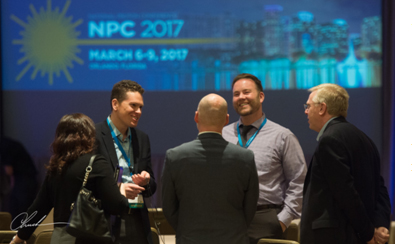 Over the course of the three-and-a-half day conference, there were 10 panels and 51 speakers. During breaks, the attendees wandered the exhibition hall soaking up the latest in proton and related products, services and technologies.
Over the course of the three-and-a-half day conference, there were 10 panels and 51 speakers. During breaks, the attendees wandered the exhibition hall soaking up the latest in proton and related products, services and technologies.
What Caught Our Interest
Of particular interest to us were sessions covering the growing challenge of reimbursement from private insurers, strategies for engaging health insurers, new health insurance reimbursement strategies and a Patient Centered Program panel hosted by Yoly Magana, Director Clinical Operations, Radiation Medicine at the James M. Slater, MD Proton Treatment & Research Center.
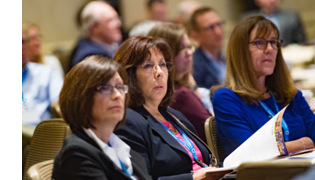 Two patient testimonies were given, one from Ron Nelson, author of Protons Versus Prostate Cancer: Exposed. The other was singer/entertainer Tom Garrett from The Classic IV. Both spoke of their prostate cancer journeys, their proton experience, and their (very) happy life after protons.
Two patient testimonies were given, one from Ron Nelson, author of Protons Versus Prostate Cancer: Exposed. The other was singer/entertainer Tom Garrett from The Classic IV. Both spoke of their prostate cancer journeys, their proton experience, and their (very) happy life after protons.
UFHPTI Proton History and Contributions
Dr. Nancy Mendenhall, Medical Director for the University of Florida Health Proton Therapy Institute spoke at a luncheon on “How UFHPTI Accelerates the Value of Proton Therapy.”
Dr. Mendenhall reviewed the history of UFHPTI from design stage through start up in 2006. Since that start up, their staff of 150 clinical and administrative personnel has treated more than 6,500 patients including 1,200 children; 98 percent of their patients are involved in outcome studies. Dr. Mendenhall commented on studies at UFHPTI that have resulted in 130 published papers. These studies documented the superb healing power of the proton beam.
Benefits of Proton over IMRT for Prostate Cancer Shown
Dr. Mendenhall presented slides showing five year (or greater) tumor control with protons for low-, intermediate- and high-risk patients at 99 percent, 99 percent and 76 percent in one study involving 211 patients and 99 percent, 94 percent and 74 percent for another study involving 1,327 patients.
In contrast, studies at Memorial Sloan Kettering using IMRT on 1,002 patients showed results for low-, intermediate- and high-risk patients at 98 percent, 86 percent and 68 percent respectively, and a study at Mayo clinic involving 302 patients with results at 77 percent, 70 percent and 53 percent respectively.
Grade 3 or higher genitourinary (GU) and gastrointestinal (GI) morbidity (side effects) were low and comparable in all studies. However, when bowel urgency is evaluated, proton therapy showed a remarkable advantage with results less than half that of IMRT: 7 percent proton vs. 15 percent IMRT. The following table shows some of these results.
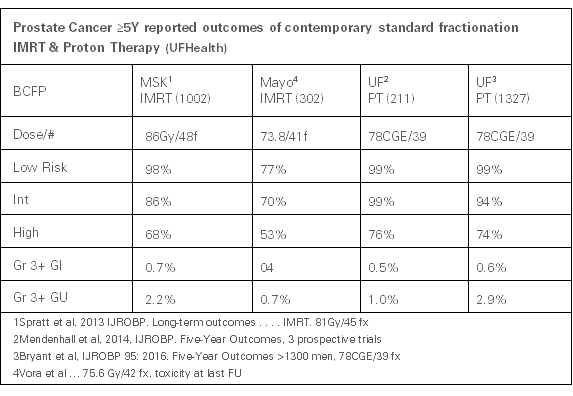
Dr. Mendenhall reported similar favorable results when comparing hypofractionation (higher doses/fewer treatments) with proton to hypofractionation with IMRT at Radiation Therapy Oncology Group (RTOG). The proton arm reported 99 percent and 93 percent tumor control outcomes at five years or more for low- and intermediate-risk patients, respectively. And the IMRT group, where only low-risk patients were treated, reported 86.3 percent tumor control.
Morbidity for this study was noticeably better for the proton group. Grade 3 or higher GI and GU side effects for the RTOG group were 4.1 percent and 3.5 percent and for the proton group, 0.5 percent and 1.7 percent respectively. Those are significant differences. See table:
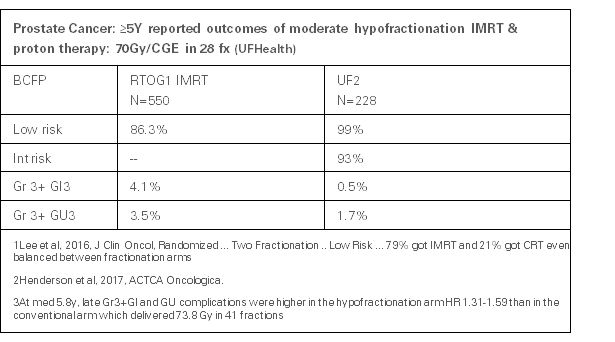
Challenges of Randomized Studies
Dr. Mendenhall spoke about the challenges faced when attempting to conduct randomized clinical trials including patients’ willingness to participate and resistance from medical insurers. However, she pointed out, that “we are at a place in our understanding of proton outcomes and in terms of a critical mass of facilities and patients to undertake comparative trials that are ethical, feasible, and likely to yield meaningful results.” She referenced the PCORI study proposal comparing proton therapy to IMRT in treating prostate cancer as one example of this next phase of work. The PCORI study is discussed in the News section of this BOB Tales.
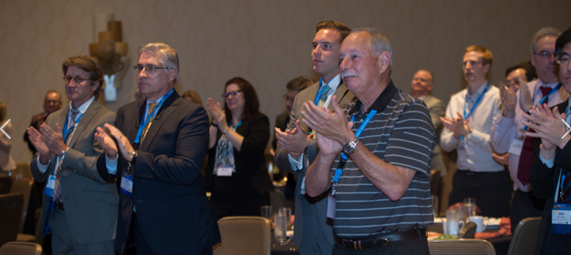
Lifetime Achievement Award Ceremony: Dr. James Slater and Dr. James Cox
One highlight of the conference for us was a luncheon awards ceremony honoring Dr. James Slater from LLUCC and Dr. James Cox from MD Anderson. Both received lifetime achievement awards.
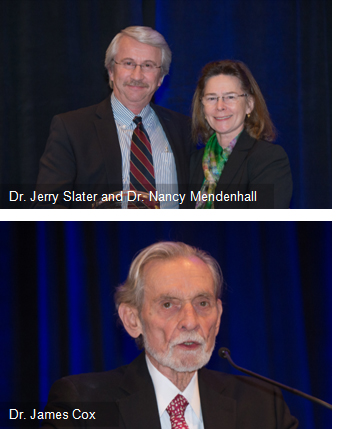 Dr. James M. Slater
Dr. James M. Slater
Dr. James Slater could not attend the event. He was represented by his son, Dr. Jerry Slater, Chairman of the Department of Radiation Medicine at LLUCC. Dr. Nancy Mendenhall spoke of Dr. James Slater’s contributions and presented the award to Dr. Jerry Slater.
Dr. Mendenhall traced Dr. James Slater’s history beginning with his birth in 1929 and his education, which consists of a BS in Physics University of Utah, M.D. radiation residency at White Memorial, NIH Fellowship at MD Anderson, Assistant, Associate Professor Radiation Science and Professor and Co-Chairman, Radiation Science and Chairman Radiation Science and Radiation Medicine at Loma Linda.
Dr. Mendenhall spoke of Dr. Slater’s frustration and dissatisfaction with conventional radiation side effects his patients were experiencing early in his medical career. Because of his physics background, he knew there was a better way to treat patients. “This consummate problem-solver recognized the necessary elements and steps necessary to achieve the solution,” she said. “That included computerized treatment planning, 3-D imaging, a gantry system and much more.”
Some prominent dignitaries in the field, back then, challenged Dr. Slater’s vision and mission: “Do you really want to go through with this?” and “We don’t know what value protons will have,” said two of them.
Dr. Slater persevered. He approached the Fermi Lab in 1985 and organized a conference with 150 people to talk about his dream. He built a team of scientists, engineers, physicians, political leaders and advocates necessary to achieve his goals. Then he proceeded to knock down all the obstacles, one by one.
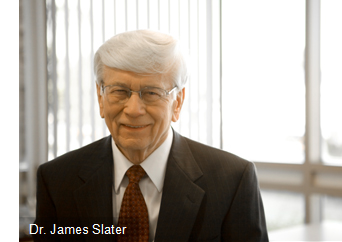 And his challenges weren’t limited to science and technology. Dr. Slater and his team were also responsible for convincing Medicare and private insurers to cover proton therapy back when so little was known about this fledgling technology.
And his challenges weren’t limited to science and technology. Dr. Slater and his team were also responsible for convincing Medicare and private insurers to cover proton therapy back when so little was known about this fledgling technology.
In 1990, the first hospital-based proton treatment center opened at the Loma Linda University Cancer Center, thanks to this great man.
Loma Linda has treated more than 20,000 patients, many thousands of whom came from all over the world. Dr. Slater’s team has published more than 200 papers and has influenced medical leaders around the world to adopt this medical technology. Twenty-five proton centers exist in the U.S. and dozens more around the world, thanks to Dr. James Slater’s pioneering work.
Dr. Slater has been the recipient of numerous awards over the years from Scotland, Austria, Japan, and the United States. He is most deserving of the Lifetime Achievement Award presented to his son, Dr. Jerry Slater, on his behalf last month.
Dr. James Cox
Dr. James Cox is a scientist, researcher, administrator and educator who has touched thousands of lives. He also served our country and is a veteran Army physician and officer. He was also the editor for the RED Journal and head of the Radiation Therapy Oncology Group (RTOG). His wife of many years, Dr. Ritsuko Komaki, also a radiation oncologist, is one of the top lung cancer specialists in the world. The two of them are a real power couple in the field of radiation oncology.
Dr. Cox headed the MD Anderson Cancer Center Radiation Oncology and Medical Physics departments for 15 years, where he nearly tripled the number of patients, physicians and physics staff, making the MD Anderson Cancer Center one of the largest and most prestigious cancer treatment and research centers in the world.
He, too, is a major innovator and contributor to the proton world, having initiated the MD Anderson proton effort 20 years ago. Under Dr. Cox’s leadership, MD Anderson became the fourth proton treatment center in the U.S. and the second NCI-designated Comprehensive Cancer Center to have a proton treatment center.
As you can see, Dr. James Cox is most deserving of this lifetime achievement award and special recognition.
Other Interesting NPC Happenings
On the evening of Monday, March 6, conference participants were bused to the UF Health Cancer Center at Orlando Health to tour their new single-room Mevion-based proton treatment facility. Perhaps the most fascinating part of that visit was discovering the multi-ton particle accelerating cynchrotron actually rotates around the patient to properly position the beam for treatment. Other single and multi-room facilities have stationary accelerators.
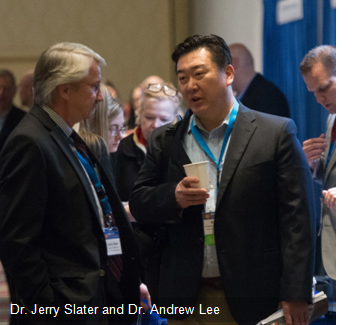 In Summary
In Summary
Above is just a small sampling of the events at NPC 2017. One of the great benefits of an event such as this is that it allows members of the proton community to network, share information, discuss challenges and build relationships.
When in the presence of some of the smartest and most caring medical and administrative professional in the world, as was the case on March 6 through 9, one can understand why the proton movement—despite the large number of obstacles we face—is alive and well, and growing exponentially.
This was another terrific National Proton Conference
Next Month
Next month we will cover “Protons in 2021”—one of the most exciting topics of the conference.
Pacific Northwest BOB Reunion
When: Thursday, May 25, 2017: Golf during the day and dinner at 5:30 p.m.
Where: Portland Adventist Medical Center, 10123 S.E. Market Street, Portland, OR 97216
What: Enjoy a buffet dinner and an evening of reflection on our proton therapy treatment. During the event, there will be a presentation on new happenings in proton therapy at Loma Linda University Health. The price is $20.00 per person. Register here for the dinner.
If you’re interested in playing golf earlier in the day, email Gary Brown at [email protected] for more information.

Member Writes Article for Regional Newspaper
James Taipale had a wonderful experience of treatment at Loma Linda University Cancer Center 10 years ago. He had an aggressive cancer that his doctor told him was inoperable. Here is the article he wrote for the Idaho Statesman:
Taipale letter: Prostate Cancer
Regarding the article Feb. 27, “Promising new treatments help fight advanced prostate cancer.” I received a diagnosis of aggressive prostate cancer in 2006. My urologist informed me that my tumor was inoperable. Fortunately, I learned of a book, You Can Beat Prostate Cancer: And You Don’t Need Surgery To Do It, by Bob Marckini.
The book informed me that there was a prostate cancer treatment available for treating aggressive prostate cancer; that it was non-invasive, and utilized a proton beam to kill the tumor. The proton beam can be precisely targeted to the tumor mass, avoiding collateral damage to healthy cells. The book convinced me that proton therapy was the best treatment available.
I subsequently was accepted for treatment at Loma Linda University Medical Center, Loma Linda, CA. My treatment began in May 2007 and lasted 10 weeks. Today, I am a healthy 83-year-old and suffer no side-effects from the treatment. I am a BOB (Brotherhood of the Balloon) member. BOB is prostate cancer support group which has more than 8,000 (former proton therapy patients) members. Persons interested in learning more about proton therapy can buy Mr. Marckini’s book on Amazon or visit www.protonbob.com.
Member Pens Book About Prostate Cancer Journey and Proton Therapy Treatment
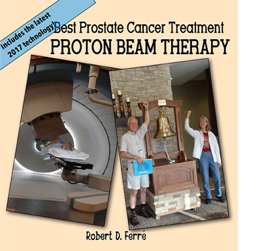 BOB member Robert Ferre decided to spread the word about proton therapy for prostate cancer after he was treated last year at the Provision Center for Proton Therapy in Knoxville, TN.
BOB member Robert Ferre decided to spread the word about proton therapy for prostate cancer after he was treated last year at the Provision Center for Proton Therapy in Knoxville, TN.
In his book, Best Prostate Cancer Treatment; Proton Beam Therapy, Robert shares his personal experience of receiving proton therapy. He discusses why urologists rarely mention proton therapy; proof that proton therapy delivers the best results with the fewest side effects; how proton therapy out-performs conventional radiation treatments like IMRT and much more.
.gif)
We have been producing BOB Tales newsletters monthly for 16 years. There have been important articles that new members have not seen, and others may have forgotten. We are periodically re-running some articles from past newsletters. The following is from November 2010.
The Importance of a Second Opinion—You’re Not Going to Believe This
Last month we received an email from Bob Nealon. He had been diagnosed with prostate cancer and his urologist recommended Da Vinci laparoscopic robotic surgery. Bob did his homework, and narrowed his choices to Da Vinci or proton. He then contacted Loma Linda University Cancer Center for information on proton therapy, and they sent him some material that included a copy of Bob Marckini’s book. Bob read the book, followed the suggestions on getting a second opinion on his pathology slides, and discovered that he didn’t have prostate cancer! Greatly relieved, he posted a review of the book on Amazon:
If you have questions about prostate cancer treatments, read this book!
October 29, 2010
If you have been diagnosed with prostate cancer, know or love someone who has, or have concerns about prostate cancer due to a family history, you must read Bob Marckini's book. It is an absolute wealth of information written by an intelligent, inquisitive engineer and spelled out in laymen’s terms that anyone can understand. You'll know what questions to ask and be much better informed about the answers you are, or are not receiving. As a resource tool alone it is a treasure for where to find additional information. The writer admits to a bias for proton treatment and for good reason. Read his book and you’ll understand why. I did and was about to make a decision between robotic assisted surgery and proton treatment. I was leaning heavily toward proton treatment when I received a phone call that changed everything.
Because of the advice in Bob’s book I understood the pathology report on my biopsy slides was subjective and should be read by two different laboratories. One of the many resources in the book was a list of a few of the premier labs in the country. I took this advice and sent my slides off just to confirm if the cancer was any worse, or better than indicated on the first report. The call I received was from Dr. Epstein, the Director of Surgical Pathology at Johns Hopkins. He told me, “You do not have cancer.” What I do have is an amended pathology report and a letter of apology from the first pathologist. Read the book; question everything; question everyone and then act on it. Whatever course of treatment you select, you’ll have the confidence and conviction you’re making an informed decision that you can live with.
This is another reader who, after reading Bob’s book, got a second opinion on his pathology slides. He also learned he didn’t have prostate cancer. Tom Bayus posted this review on Amazon:
Always get a second opinion on your diagnosis.
April 6, 2007
In January of 2007, at the age of 55, I was diagnosed with prostate cancer. My urologist wanted to operate within two weeks. After finding Bob Marckini’s book, “You Can Beat Prostate Cancer: And You Don’t Need Surgery To Do It,” I read it from cover to cover and took his advice. I had my slides reviewed by another pathologist. The results conflicted with the original report, so I sent the slides to Dr. Jonathan Epstein at Johns Hopkins, who is recommended in Bob’s book. He stated that I needed another biopsy to be certain, since he could not say that it definitely was cancer. After having the second biopsy, the results came back that I did not have prostate cancer. Had I not read this book, I may very well have had needless surgery. This is definitely a “must read” for every man diagnosed with prostate cancer. Don’t leave your life in the hands of one doctor! Always do your homework and make sure it includes this book.
Update 2017: Both reviews above can still be found on Amazon.
We know of another gentleman who was diagnosed with prostate cancer and chose surgery. A complete pathology analysis of his prostate, after removal, showed no cancer was present. This man had his prostate removed needlessly. We wonder what his quality of life is like today and if he has any permanent side effects.
A second pathology opinion takes only a few days and every patient owes it to himself to get one. In most cases the original diagnosis is confirmed. But in some cases it is determined that the cancer is either more or less aggressive than originally thought, and this is important to know in establishing a treatment protocol. And, as you have seen in rare cases, a second opinion on pathology slides may determine there is no cancer present at all.
The stories above affirm the value of getting a second opinion when it comes to important medical decisions. It’s safe to say that for most of our members, proton therapy was not the first recommendation from their urologists. Most conducted searches, combed the Internet, read articles and books, got second and third opinions on their treatment options and ultimately chose proton therapy.
More on the Importance of a Second Opinion
The book, How Doctor’s Think, references numerous tests where doctors often differ in opinion on the results. Reading biopsy slides is a good example. In the case of prostate cancer, the difference between Gleason 3+4 or 4+3 or 3+4 and 4+4 is significant. These differences can have a huge impact on the customized treatment (proton, photon, hormones) as well as disease-free survival and quality of life after treatment. So, getting a second opinion on pathology slides is important. We typically recommend one of the premier pathology labs listed in the appendix of Bob’s book.
Here is another case for a second opinion. In a March 18, 2017 syndicated Annie’s Mailbox article, a patient wrote about his primary care physician of 40 years repeatedly ignoring a half-dollar-sized lesion on his arm, “which the doctor covered with a blood pressure cuff every time I saw him.” This same doctor, when asked about a never-healing sore on the same patient’s forehead, said it was nothing but “a blemish.” When a friend insisted he see a dermatologist, he discovered he had a melanoma on his arm and a basal cell carcinoma on his forehead.
In the same article it was reported that a physician diagnosed his patient with a lingering chest cold. When a family member insisted the gentleman seek a second opinion, he learned he had lung cancer.
As you can see, both under-diagnosis and over-diagnosis can have a devastating impact on the patient. Too many patients complacently put all their trust in one physician. The result can be life-changing, and not in a good way. Early diagnosis of many cancers can be treated with curative results. Delays in treatment can lead to death. Second opinions can’t hurt, and are typically covered by insurance. It’s the wise thing to do.

Thirteen Years Post-Proton—Finds Unique Way to Give Back
BOB member John L. Richard, Ph.D. (Cave Creek, Arizona) was diagnosed with prostate cancer in August 2003. His brother had prostate cancer years earlier and suffered through incontinence and erectile dysfunction. “I knew I didn’t want surgery,” John said.
A Career in Research
Fortunately, John was a researcher, having spent his career in a laboratory studying the effects of mold toxins (mycotoxins) found in grains consumed by animals and humans and the effects on the immune system. He received his Ph.D. from Iowa State University in 1968 and served on the Faculty of Toxicology as Adjunct Professor of Botany and Plant Pathology at the University. Later, John was asked by the Agricultural Research Service of the USDA to move to Peoria, IL to become Research Leader of a Mycotoxin Research Unit studying mycotoxin production and occurrence in field crops, genetic pathways of production and various testing procedures for mycotoxins in a variety of commodities and substrates.
John retired from the government after 34 years of research with over 200 research papers in various journals, and was hired by Romer Laboratories, a mycotoxin testing laboratory company, in Union, MO to be first, the Executive Vice President, then CEO and President. He retired from Romer in 2005 and moved to Cave Creek. But, he remained a consultant to Romer for 10 years. He also served as an independent consultant to various companies, mostly those in the pet food industry. John fully retired in 2015.
Prostate Cancer Diagnosis and Treatment Decision
After receiving his prostate cancer diagnosis, John began another type of research as he was determined to find a treatment that was less invasive than surgery, with fewer side effects. “I learned about the Brotherhood of the Balloon online,” John told us. “Incidentally, on the same day, my sister-in-law heard a commercial on the radio about proton therapy at Loma Linda University Cancer Center. I began researching more about proton therapy and read through most of the testimonials on the BOB website.”
John also spoke with many former proton therapy patients. “Every one of them gave great praise to the treatment and talked about the fact that they’d suffered little, if any, side effects,” he said. “I set up a consultation with LLUCC for the first week of November in 2003. My decision was made quickly thereafter.”
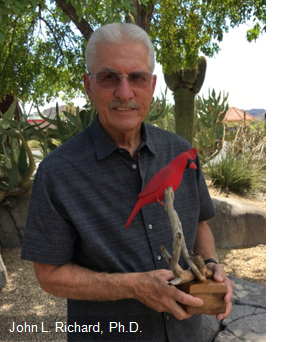 After Treatment
After Treatment
Thirteen years later, John’s PSA is non-detectable and he’s feeling well, “other than a few age-related things—nothing serious,” he told us. He practices yoga, swims, and lifts weights at his local YMCA several days a week. He also plays the guitar and sings—sometimes for a local retirement center. In his “spare” time, John carves birds and other animals out of wood and sells them to a local shop.
Support Group Leader
Shortly after moving from Missouri to Cave Creek in 2005, John founded a cancer support group made up of men and women who had been touched by cancer who were looking to find support and strength from each other. “We got together regularly and soon had many volunteers to help with luncheons, parties, seminars and more,” John said. The group has a steering committee and a main coordinator (another BOB member). They even have an introductory brochure and issue an email newsletter. John writes it, gathering information from the Internet and the BOB Tales newsletter, and sends it out to 60 members regularly.
A Unique Way to Give Back
John also told us that he often checks in with his old employer, Romer Laboratories. “Over the years, some of my co-workers and friends have passed away. When I learn of their passing, I typically make a donation to proton research at Loma Linda University Cancer Center in their name. I think it’s a nice way to give memorial money. LLUCC then follows up to let them know that a contribution has been given in their name.”
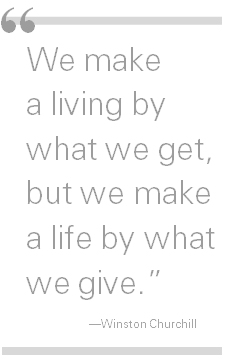 How to Contribute to Proton Research
How to Contribute to Proton Research
- Donate Online: Visit the LLUCC website. Make sure the “Designation Type” is set to “Proton” and the “Designation” is set to “Robert J. Marckini Chair."
- Send a Check: Make your check out to “LLUCC Proton” with “Marckini Chair” on the memo line and send to: LLUH, Office of Philanthropy, P.O. Box 2000, Loma Linda, CA 92354.
- Make a Call: Contribute by phone. Contact Elvia DeHaro at 909-558-5010
- Make a Future Gift: Contact Todd Mekelburg at the Office of Planned Giving at Loma Linda University Health at 909-558-5376 or [email protected].
- Other Ways to Give: Contact Matt Miller at the Office of Philanthropy at Loma Linda University Health at 909-558-3582 or [email protected].

Eating Broccoli May Lower Prostate Cancer Risk
 This is not new news. We’ve reported in the past that consuming cruciferous vegetables like broccoli and cauliflower can lower the risk of prostate cancer.
This is not new news. We’ve reported in the past that consuming cruciferous vegetables like broccoli and cauliflower can lower the risk of prostate cancer.
But a study at Oregon State University, reported in an article in The New Indian Express concludes that sulforaphane—a dietary compound from broccoli—may work though its influence on long, non-coding RNAs while offering a new way to specifically prevent or slow the progression of malignant cells.
“There was a four-fold decrease in the ability of prostate cancer cells to form colonies,” according to the study. “This may relate to more than just cancer prevention. It would be of significant value if we could develop methods to greatly slow the progress of cancer and keep it from becoming invasive,” the lead researcher said.
More on Green Tea and Cancer
Back in 2015 we reported that the active compounds found in green tea could help protect against the development of prostate cancer among men with pre-malignant lesions. Since then, there have been more studies assessing the clinical benefits of green tea consumption on the progression and prevention of prostate cancer. The fact remains—green tea has anti-cancer compounds and if it’s not part of your diet already, you may want to start drinking it or consider using a supplement.
 Laboratory studies have shown that green tea:
Laboratory studies have shown that green tea:
- Slows down or prevents the growth of cancer cells
- Blocks formation of new blood vessels that cancers need to feed themselves with nutrients
- May boost the immune system
- Appears to trigger natural detox enzymes in our body that help to protect against cancer formation
While regular green tea consumption is recommended for lowering cancer risk, its effectiveness in people who already have cancer is unknown. However, because of its lack of toxicity and numerous anti-cancer properties, it may make sense to consume two to three cups daily. It would be reasonable to expect that a preventive therapy that can help to lower cancer risk might also help prevent the progression of the disease.
In Support of the Five-Second Rule?
Most people will admit they’ve eaten food that has fallen on the floor. They invoke the tongue-in-cheek “five-second rule” that says it’s okay to eat fallen food as long as it’s picked up within five seconds.
Donald Schaffner, PhD, a food microbiologist at Rutgers University recently tested the five-second rule and discovered there is a germ of truth to it (pun intended). More bacteria are, in fact, transferred to certain foods the longer they stay on some surfaces, he has found. But time is not the only factor; and it’s not the most important factor either, as reported in the February 1, 2017 issue of Bottom Line Personal.
If you drop something dry on the floor, such as a cracker, it’s pretty safe to eat. But something moist, such as a piece of melon, may not be because “moisture facilitates bacterial transfer,” says Schaffner.
Here’s his most interesting finding: Where food falls matters, maybe even more than the other factors. Typically a home’s floor is not especially germy, but the kitchen counter often is. And most people happily eat food that has contacted their kitchen counter.
So, the “five-second rule” is probably not the safest dining strategy. Under certain circumstances we may be exposing ourselves to significantly greater risks for food-borne illnesses
Not All Supplement Manufacturers are the Same
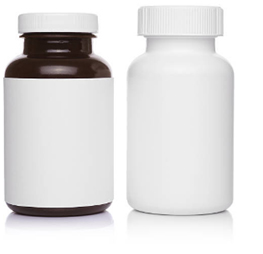 We have written many times in this newsletter about the importance of vitamin D (D3) in preventing cancers, including prostate cancer.
We have written many times in this newsletter about the importance of vitamin D (D3) in preventing cancers, including prostate cancer.
In a September 2015 Prostate Forum video, Dr. Charles “Snuffy” Myers, noted prostate cancer “guru,” noted that we need to be very careful about the source of vitamins and supplements we take. He used as an example, Vitamin D. He says many supplement manufacturers put out vitamin D that is “either in a form that the body can’t absorb, or they are simply shipping blank capsules.”
Dr. Myers says supplement manufacturers don’t do an adequate job policing themselves and on quality control. He suspects in many cases the capsule doesn’t contain what it says, and in some cases may contain things that are dangerous.
Myers says any vitamins/supplements you take “should come from a provider you know is safe”
On a number of occasions, Dr. Myers has recommended Life Extension as a quality provider of vitamins and supplements. Life Extension vitamins/supplements can be purchased directly from the company or through Amazon.
Series: “Make Vegetables Taste Good”
This is the ninth segment on a subject that’s consistent with our Anticancer series that began in October 2016. Deb Hickey made it her mission to find recipes that make the most healthful vegetables taste delicious.
As we mentioned last month, we received overwhelming feedback from readers to continue this series. Several of you also sent feedback, recipes, and tips and tricks for cooking healthfully. Here is a comment we received from Harold Peters (Blackfoot, ID) about last month’s black bean brownie recipe:
You could modify the black bean brownie recipe to make it vegan (and “slash your risk of prostate cancer by 35 percent!”) by making the following changes:
- Use olive oil to grease the pan (in place of butter)
- Use 2/3 cup of applesauce (in place of 2 eggs)
Harold also sent us a long list of personally-tested tips for making an easy and healthful vegetarian stir fry as well as some information on how he became a vegetarian. An excerpt from his message is below:
Becoming a Vegetarian
I had been a lifelong “lacto-ovo” vegetarian who frequently consumed large quantities of cheese and other dairy products. In 2003, I was diagnosed with prostate cancer and went to Loma Linda University Cancer Center for proton treatment. While there, I did a lot of research and discovered a link between dairy consumption and the development of both prostate and breast cancers.
I felt the elimination of dairy products was a small price to pay for good health, so I switched to a vegan diet. For the past 13 years I have been on the lookout for tasty vegetarian recipes. I have also done some experimenting and consider myself to be a “specialist” in preparing vegan stir-fry. Here are some of the things that work well
for me.
Vegetarian Stir-Fry Tips
- I recommend using brown rice with stir-fry, so I fill the base of a rice cooker with water and add 2 1/2 cups of rice and 3 cups of water to the cooking container. I set the rice cooker for 75 minutes. This gives me ample time to prepare and stir-fry the veggies and have both rice and veggies finished at about the same time.
- I like the convenience of using a large, covered electric fry pan. I set the temperature at 250 degrees. This low temperature helps to prevent the overheating of oil (if used) and the burning of the veggies.
- I chop up and sauté a large onion in no more than 1 tbsp of olive oil. If you prefer to limit your intake of oil, the onion can be sautéed in a small amount of water, stirring frequently to avoid burning.
- I choose six to eight (or more) of the following veggies. They are listed in the approximate order that I add them to the stir-fry (I start with the veggies that require the longest cooking time or need extra time to absorb flavors from other ingredients):
- Bell peppers, celery, garlic, firm or extra firm tofu (1/2-inch to 1-inch cubes), gluten (especially tasty is Companion Cha'i-Pow-Yu Braised Gluten, also called Seitan Tidbits), eggplant (cubed with the skin left on), cauliflower, broccoli, kale (de-stemmed, chopped, and bruised/messaged), mushrooms (sliced fresh or canned), snow peas in the pod, nuts for flavor and crunchiness (whole or pieces of cashews, pecans, walnuts, or sliced almonds all work well), canned garbanzos (chick peas), bean or bamboo sprouts, water chestnuts, a generous amount of sliced cabbage, and baby spinach.
- Bell peppers, celery, garlic, firm or extra firm tofu (1/2-inch to 1-inch cubes), gluten (especially tasty is Companion Cha'i-Pow-Yu Braised Gluten, also called Seitan Tidbits), eggplant (cubed with the skin left on), cauliflower, broccoli, kale (de-stemmed, chopped, and bruised/messaged), mushrooms (sliced fresh or canned), snow peas in the pod, nuts for flavor and crunchiness (whole or pieces of cashews, pecans, walnuts, or sliced almonds all work well), canned garbanzos (chick peas), bean or bamboo sprouts, water chestnuts, a generous amount of sliced cabbage, and baby spinach.
- For health reasons I seldom add salt, but I usually add a small quantity
- of Liquid Amino (soy sauce could also be used) for flavor when I add the cabbage. I also add spices for flavoring: Cumin, curry powder, turmeric, and nutritional yeast.
Getting to Know Harold
One thing we love about the BOB is that one email from a member—even a comment about black bean brownies—can result in a conversation; a story; getting to know someone and learning how special they are while gaining interesting information to share with our readers.
We found Harold, a retired pastor, teacher, missionary, and university president, to be so interesting we turned his emails into a testimonial. Find out what happened when he learned he was diagnosed with prostate cancer and why his prior five years living in Papua, New Guinea led him to proton therapy and Loma Linda University Cancer Center.
Want to share your healthful cooking tips or a recipe? Write to us!

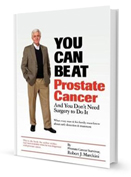
Great Quotes!
In the past month, we’ve seen some great reader quotes.
This is the Bible for those diagnosed with prostate cancer. It convinced me that proton therapy was the answer. Period. Amen. End of story. —Jim Thoman, BOB Member (via Facebook)
Bob Marckini’s book was invaluable; it filled in every blank in my research. —Prospective Proton Patient (via email)
Bob’s engineer’s approach and complete explanations convinced me to go to LLUCC for treatment. Bob’s book and my experience at Loma Linda changed my life. —James Pennington, BOB Member (via email)
Excerpts from Amazon Reviews
 If that is not a good enough reason
If that is not a good enough reason
Insightful, thoughtful, well-versed in layman’s terms on proton therapy … [Bob Marckini] gives hope and direction as to the process that will bring you to a decisive decision … Bob is biased about proton therapy, and rightly so—he is, I believe, 15 years out of treatment. If that is not a good enough reason, then what is? … This is a must read for those recently diagnosed and their loved ones who must accompany them on a difficult journey. Thank you, Bob! May G_d bless and keep you! —Frodo, 3/26/17
 Five Stars
Five Stars
Probably the single most important book I read on my road to understanding my treatment options. —RelRay, 3/16/17
Buy Online, in Bulk or in Spanish
Online: Paperback: $19.00--•--Kindle: $9.99--•--NOOK Book: $9.99--•--Apple iBook: $9.99
In Bulk: Conctact us for a discount price list. Proceeds from book sales support proton therapy research through the Robert J. Marckini Endowed Chair at LLUCC.
In Spanish: Buy the print version or in eBook format.

An Attorney’s Advice: Identity Theft
A few years ago, Bob Marckini was a victim of identity theft. The thieves stole his credit card number and security code (likely from a Boston restaurant when the card was taken out of sight for payment). Within a few days, several thousand dollars in fraudulant gift cards were purchased. And his account information was changed, including password and home address (from Massachusetts to Texas). Fortunately the credit card company was alerted by the gift card purchases and notified Bob. But putting things back together, replacing the card and dealing with the credit agencies took countless hours and was “a nightmare,” according to Bob.
Following is a note a corporate attorney sent to the employees in his company. Some of these precautions are obvious; others may not be. Protecting your identity and preparing for quick recovery takes some planning.
- The next time you order checks, have only your initials (instead of first name) and last name put on them. If someone takes your checkbook they will not know if you sign your checks with just your initials or your first name, but your bank will know how you sign your checks.
- When you are writing checks to pay on your credit card accounts, DO NOT put the complete account number on the memo line. Instead, put the last four numbers. The credit card company knows the rest of the number and anyone who might be handling your check as it passes through all the check processing channels won’t have access to it.
- Put your work phone number on your checks instead of your home phone. If you have a PO Box, use that instead of your home address. If you do not have a PO Box, use your work address. Never have your social security number printed on your checks. You can add it if necessary, but if you have it printed, anyone can get it.
- Place the contents of your wallet on a photocopy machine, do both sides of each license, credit card, etc. You will know what you had in your wallet and all of the account numbers and phone numbers to call and cancel. Keep the photocopy in a safe place. I also carry a photocopy of my passport when I travel either here or abroad. We’ve all heard horror stories about fraud that’s committed on us in stealing a name, address, Social Security number, credit cards, etc.
Unfortunately I, an attorney, have firsthand knowledge because my wallet was stolen last month. Within a week, the thieve(s) ordered an expensive monthly cell phone package, applied for a Visa credit card, had a credit line approved to buy a computer, received a PIN number from the DMV to change my driving record information online, and more.
More on this next month.
Hard-wired Smoke Alarms Should be Replaced Every 10 Years
Smoke detectors are an essential part of home safety. Many people needlessly perish in fires, often because they didn’t have working smoke detectors in their homes. The National Fire Prevention Association reports that three of every five home-fire deaths are in homes with no smoke alarms or with none that worked.
NBC News recently reported on a number of fire deaths connected with homes that had:
- No smoke detectors
- Smoke detectors with dead batteries
- Smoke detectors with batteries removed
They also showed that people with hard-wired smoke detectors often have a false sense of security, thinking they are protected when they are not. Smoke detectors older than 10 years often have a dust build-up on sensors that renders them useless. Home safety/security experts recommend changing hard-wired smoke detectors every 10 years or fewer. And they recommend you change all of them at the same time, even if some are working properly.
Smoke alarm testing should be done by the homeowner on a regular basis. Some safety professionals recommend that tests be performed monthly.

Last Month’s Brain Teaser
Who is this man?
- As a wrestler, he lost only one of his 300 matches.
- He was a licensed bartender.
- He never graduated from college. In fact, he had less than a year of formal schooling.
- He hated his nickname.
- His mother was poisoned when he was 9 years old.
- He was the tallest person ever to have the job he had, and he wore size 14 shoes.
- He suffered from depression.
- His wife was an opium addict.
- His “hobby” was … cats.
Answer: President Abraham (Abe) Lincoln.
Winner: The April brain teaser winner is Dick Mansberger of Thomasville, PA. Dick was diagnosed with prostate cancer in June 2011. Dick told us when he was diagnosed he felt strongly about taking the time to explore all treatment options (of course—he’s an engineer!). During an Internet search, he learned about proton therapy and found Bob Marckini’s book. Dick underwent the hypofractionated proton therapy program at Penn Medicine in January 2012. He said his treatment was “effortless” and he feels “100 percent!” He’s had no side effects and his PSA is low.
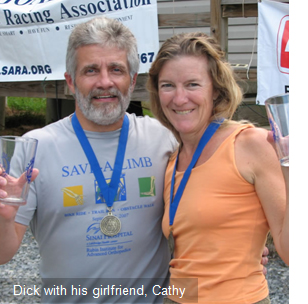 Dick, born in Gettysburg, studied electrical engineering on scholarship at Bucknell University for a year before deciding he’d rather have “hands-on” experience. He retired just last week after 43 years in electrical construction as a proud member of IBEW Local 229, York, Pennsylvania.
Dick, born in Gettysburg, studied electrical engineering on scholarship at Bucknell University for a year before deciding he’d rather have “hands-on” experience. He retired just last week after 43 years in electrical construction as a proud member of IBEW Local 229, York, Pennsylvania.
Dick also used his hands to design and build his house. It took six years—nights and weekends—to complete. “It’s exposed beam; has a cathedral ceiling, a great room and two hand-built masonry wood-fired heaters (one brick, one soapstone)” and it’s located on 12 acres of wooded hillside.
Dick and his girlfriend, Cathy, have a small organic vegetable farm, which occupies most of his time these days. They hope to do more biking, mountain and road, in the coming months. Dick also wants to resume adventure racing and do volunteer trail maintenance work at York County Parks.
New Brain Teaser
Say you catch a fish that weighs five pounds plus half its weight. How much does the fish weigh?
Send your answer to [email protected] for a chance to win a signed copy of Bob Marckini’s book, You Can Beat Prostate Cancer.
Seniors Get Married
Two very active seniors (Jacob, age 92 and Mary, age 89), living in a retirement community, are all excited about their decision to get married.
They go for a stroll to discuss the wedding, and on the way they pass a drugstore. Jacob suggests they go in. He addresses the man behind the counter, “Are you the owner?”
The pharmacist answers, “Yes.”
Jacob: “We’re about to get married. Do you sell heart medication?”
Pharmacist: “Of course we do.”
Jacob: “How about medicine for circulation?”
Pharmacist: “All kinds.”
Jacob: “Medicine for rheumatism?”
Pharmacist: “Definitely.”
Jacob: “How about suppositories and medicine for impotence?”
Pharmacist: “You bet!”
Jacob: “Medicine for memory problems, arthritis, and Alzheimer’s?”
Pharmacist: ‘Yes, a large variety—the works.”
Jacob: “What about vitamins, sleeping pills, Geritol, antidotes for Parkinson’s disease?”
Pharmacist: “Absolutely.”
Jacob: “Everything for heartburn and indigestion?”
Pharmacist: “We sure do.”
Jacob: “You sell wheelchairs and walkers and canes?”
Pharmacist: “All speeds and sizes.”
Jacob: “Adult diapers?”
Pharmacist: “Sure, how can I help you?”
Jacob: “We’d like to use this store as our Bridal Registry.”
Man of the House
A husband had just finished reading a new book entitled, “You Can Be THE Man of Your House.”
Finding new courage that he never knew he had, he stormed into the kitchen and announced to his wife, “From now on, you need to know that I am the man of this house and my word is the law. You will prepare me a gourmet meal tonight, and when I am done eating my meal, you will clear the dishes and serve me a scrumptious dessert. Afterwards, you are going to draw me a bath so I can relax. You will put on soothing music, wash my back and towel me dry and bring me my robe. You will massage my feet and hands to relieve any last bit of tension so that I can sleep like a baby. Then tomorrow, guess who’s going to dress me and comb my hair?”
The wife replied, “The funeral director would be my first guess.”
Turning the Other Cheek
A cement truck driver stopped at an all-night diner for a bite to eat one evening and asked the waitress for a bowl of soup and a cup of coffee. Halfway through his meal, three tough-guy bikers walked in and decided to provoke the truck driver.
The first one took a sugar bowl and dumped it in his soup. The second biker spilled the coffee on the driver’s lap. The third one bumped the driver so hard, he knocked him off the stool.
Unruffled, the driver paid his bill and left.
“He’s not much of a fighter, is he?” One biker said to the waitress.
“You’re right,” she said, “and he’s also not much of a driver. He just ran over three motorcycles.”

Quote of the Month:
“If Con is the opposite of Pro, is Congress the opposite of Progress?” — Unknown


What Are You Thankful For?
—Jeff Reagan, Editor, Patriot Health Alliance
Karen and I are heading out the door for church here in a bit, but I wanted to share something that’s on my mind …
Every morning for the past two years, I’ve asked myself a simple question: What are you grateful for?
And the idea behind the question is to start my day off giving thanks for the good things I have in my life.
For me, this has made a massive difference. Why? It forces me to focus on what I have, and not what I don’t have. Case in point …
This morning I wrote down three things I’m grateful for that most people take for granted.
- I’m grateful that God gave me the opportunity to be alive—to simply have a chance at living.
- I’m grateful for the fact that at my age, my vision, my mobility, and my hearing are all still in good shape. Many people aren’t so lucky.
- And I’m grateful for the 270,000+ customers and readers that I’m able to help each and every day with this newsletter. The “good” emails I get from customers far outweigh the bad ones. And I know that reading my newsletter each morning has changed thousands of people’s lives.
Can you see how powerful this is? Can you see how this gets my day started on the right foot?
Take a second and answer this question: What am I grateful for? Maybe it’s something fun like seeing your dog wag his tail when he sees you. Or maybe it’s something like being grateful for having a roof over your head and a warm bed to sleep in.
Either way, try to shift your focus to the good things in your life. It makes a big difference in your happiness and well-being.
Low PSAs to all,
Bob Marckini and Deb Hickey
To print the BOB Tales newsletter or view the newsletter with a larger font size, click here for the PDF file.
NO MEDICAL ADVICE: Material appearing here represents opinions offered by non-medically-trained laypersons. Comments shown here should NEVER be interpreted as specific medical advice and must be used only as background information when consulting with a qualified medical professional.
